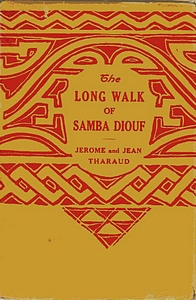
Excerpt
But the old routine had to be followed again, almost as monotonously as in Saint Pierre Wood and in the camp of Arcachon — drudgery of all sorts, fetching water, carrying soup, wine, grenades, work with pick and shovel to extend the branching ways. The coupe-coupe and gun were useless here too and the only difference the Blacks could see in the trenches was that they could find death there at any moment, but they had no better chance of dealing it.
Certainly life in these holes in the ground did not seem like the war they had imagined. War as their parents had always spoken of it was war in the open, the stealthy surroundings of a village, the ambuscade behind the trees, then all at once warriors dashing forward with wild cries, palisades overthrown, streets taken, the combat around the huts, the gun that once fired cannot be reloaded, sabre strokes on naked flesh, screams of women who flee into the forest, necklaces and bracelets snatched, old men gutted like useless beasts, young men borne into slavery — these were the memories of ancient warfare. Then at night the return, driving before them droves of cattle and captives, women bending before the conquerors, dances, tambours, songs of the witch doctors, all celebrating the exploits of the glorious day….
Editor’s Comments
A couple of years ago, I came across a French compilation of novels about World War One. Most of the titles were familiar — Ernst Junger’s Storm of Steel, Henri Barbusse’s Under Fire, and Arnold Zweig’s Education Before Verdun. But La randonne de Samba Diouf caught me short. Who’d ever heard of a World War One novel with a title about “Samba Diouf”?
Intrigued, I did a little searching and located an English translation: The Long Walk of Samba Diouf. It appears to have been out of print in English since its first printing back in 1924, but it didn’t cost too much to obtain a copy in good condition. It was written by Jerome and Jean Tharaud, French brothers and writers who collaborated on dozens of books, won the Goncourt Prize in 1906, and were separately inducted into l’Academie Française (in 1938 and 1946).
The Long Walk of Samba Diouf tells the story of a young Senegalese fisherman who sets out to claim some animals that were left to him by a relative. His journey takes him through lands belonging to other tribes, and along the way, he learns of the war that has broken out in the homeland of the Toubabs — the local term for the French colonials. Like most other natives, he ignores the news, concerned more with his fantasies of coming home a wealthy man, ready to marry the daughter of one of the strong men in his village.
Unfortunately for Samba, he wanders into an strange town just as the French authorities announce a draft of able-bodied young Africans. For every 100 villagers, one man has to be offered up for service in to the Toubab cause. A few local men befriend him, ply him with palm wine, and turn him in as their contribution. When Samba comes to, he’s on his way to a boat destined for France.
Although the Tharauds (at least as translated) adopt a rather stilted tone to convey it, the mix of tribes, languages, customs, and religions in Samba’s group of inductees is the most memorable aspect of his story. The Toubabs see the men as a faceless band of “les noirs”, but they are a wild hodgepodge — Muslims and animists; sophisticated traders and primitive bushmen. Each has some story to tell around the campfire or barracks stove each night, and each has his own interpretation of this odd endeavor of the French to turn them into a uniformed batch of able, if loosely disciplined, utility troops.
After months of training, the Africans are hauled up to the front. Expecting to put their skills as warriors to the test, they spend their days merely filling in shell craters and laying down new duckboard lanes through the mud. Finally, the NCO in charge of the group convinces his commander that the men deserve a chance in combat. In a brief, furious scene in which the sensations of an attack across No Man’s Land is mixed with learned impressions of war as told by their elders, the men attack a German line, and Samba is wounded.
From this point, the journey rolls back in a fast rewind. Samba recovers in a field hospital, wondering for a moment if the tenderness of a beautiful French nurse could lead to romance. It’s all in his head, of course, and soon enough he’s boarding another ship, headed back to Africa. He eventually gets back to his home. In true war story cliche, his girlfriend has married another, and he’s never managed to collect the livestock that was to make his fortune. He returns to fishing. What significance the whole experience has had for him is unclear as the book ends.
It would be hard for any book written almost eighty years ago by white men about the world as experienced by African men not to seem a bit dated now. To the credit of the Tharauds, who specialized in accounts of peoples very different from the advantaged, intellectual world they inhabited — Africans, Jews, Gypsies — they make considerable efforts to take the perspective of the Africans at face value. Although they adopt primitive dictions to convey the talk and thoughts of the men, there is relatively little implication that these conversations and perceptions are not sublte and sophisticated in their own way. The Tharauds’ Samba is a considerable development from James Fennimore Cooper’s American Indians, and The Long Walk of Samba Diouf probably ranks among the more balanced and sympathetic Western attempts to depict a Third World culture.
Jerome and Jean Tharaud are largely forgotten now, even in France. I suspect this is due mostly to the fact that the gap between the French and the people of their former colonies has shrunk considerably — physically, at least, if not in other ways. However, they deserve recognition for creating some of the earliest works in which these peoples were treated from an anthropological rather than imperialistic perspective.
Novelist Julian Barnes brought another novel of les freres Tharaud, Dingley , l’illustre écrivain (Dingley, the famous writer), to public attention in this 2005 article in the Guardian. Of this loose fictionalisation based on the life of Rudyard Kipling, he wrote,
The novel is thus both a critique of British imperialism – of its coarsening effects, its brutalities and self-deceptions – and a warning against literary populism. But it is also a proper novel about human failure, about the price paid (and the public benefits reaped) when part of the human heart is suppressed. It seems impossible that Kipling could not have heard of Dingley; also highly unlikely he would have read it (not least because of Archie’s death-scene). I can’t find Kipling making any written or reported comment on the novel; fictionalising him, I would imagine silent contempt as his reaction to this piece of Gallic impertinence.
Unfortunately, Dingley stands even less chance than The Long Walk of Samba Diouf of being rediscovered, at least by English readers — it’s never been translated.
Locate a Copy
The Long Walk of Samba Diouf, by Jerome and Jean Tharaud
New York: Duffield and Company, 1924

 His first act after inheriting his uncle’s fortune was a definite indication that he had renounced social glory. He sold the great house in the country which contained so many treasures, and ignored all the social responsibilities of his position. Doubtless this offended a number of people very much. A man is expected to do exactly what the herd does of which he is a member. If you belong to a family whose supreme pleasure is hunting, you are expected to hunt — and to evince a delirious passion for that activity. If you don’t, there’s something wrong with you. And not only that. Your refusal is regarded by the members of your family as a criticism of them. It’s no good saying you don’t hunt because you don’t like it, for the interpretation given to that statement is that you mean that they ought not to like it. If you persist in your refusal, it is either assumed that you have a secret vice, or that you are a Bolshevik in close touch with Moscow. Argument is useless. Either you must adhere to your refusal and accept ignominy, or you must leap on t a horse and pursue a tiny and terrified animal in company with other sportsmen.
His first act after inheriting his uncle’s fortune was a definite indication that he had renounced social glory. He sold the great house in the country which contained so many treasures, and ignored all the social responsibilities of his position. Doubtless this offended a number of people very much. A man is expected to do exactly what the herd does of which he is a member. If you belong to a family whose supreme pleasure is hunting, you are expected to hunt — and to evince a delirious passion for that activity. If you don’t, there’s something wrong with you. And not only that. Your refusal is regarded by the members of your family as a criticism of them. It’s no good saying you don’t hunt because you don’t like it, for the interpretation given to that statement is that you mean that they ought not to like it. If you persist in your refusal, it is either assumed that you have a secret vice, or that you are a Bolshevik in close touch with Moscow. Argument is useless. Either you must adhere to your refusal and accept ignominy, or you must leap on t a horse and pursue a tiny and terrified animal in company with other sportsmen.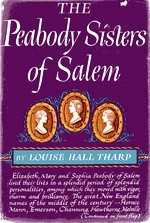 Louise Tharp Hall first celebrated the remarkable sisters in her 1950 collective biography,
Louise Tharp Hall first celebrated the remarkable sisters in her 1950 collective biography, 
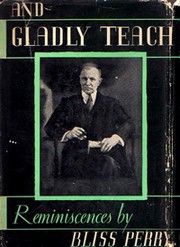
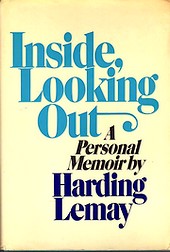
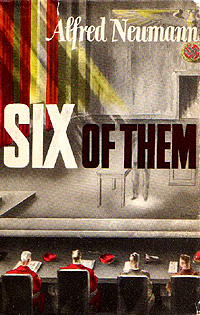 The barber at Stadelheim prison is called Adam, and most people don’t know if it his given name or his surname. He is not an independent businessman, but a state employee with the title of Surgical Assistant and a certificate attesting to his competence. He lives in the prison. Until 1935 he lived in the same capacity in the surgical clinic, and shaved the hairy parts of bodies before they were submitted to the surgeon’s knife. He is a master of his trade, but his trade has nothing in common with the gay, loquacious beautification work of a Figaro. For he does not shave faces. Adam is grave and taciturn and emaciated like a fakir. His office, his appearance and the late hour of the night at which he usually goes into action, spread terror, deadly terror. He is used to it and pays no attention to it. Sometimes it happens that his clients must be tied to their cots face down and cut hair in any position and has never yet nicked anyone. That is his pride.
The barber at Stadelheim prison is called Adam, and most people don’t know if it his given name or his surname. He is not an independent businessman, but a state employee with the title of Surgical Assistant and a certificate attesting to his competence. He lives in the prison. Until 1935 he lived in the same capacity in the surgical clinic, and shaved the hairy parts of bodies before they were submitted to the surgeon’s knife. He is a master of his trade, but his trade has nothing in common with the gay, loquacious beautification work of a Figaro. For he does not shave faces. Adam is grave and taciturn and emaciated like a fakir. His office, his appearance and the late hour of the night at which he usually goes into action, spread terror, deadly terror. He is used to it and pays no attention to it. Sometimes it happens that his clients must be tied to their cots face down and cut hair in any position and has never yet nicked anyone. That is his pride.
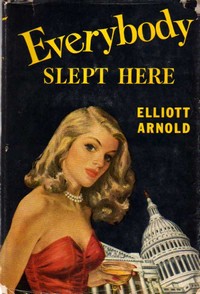 Elliott Arnold’s
Elliott Arnold’s  Many of the characters Arnold sketches are one-dimensional and forgettable, but he does a marvelous job with Willy and his wife. Willy wears a girdle to rein in his gut and relaxes by sewing women’s’ dresses, and serves his time in uniform finding the best Scotch, the finest steaks, and whatever other amenities the Congressmen and generals need. It would be easy to make him preposterous and contemptible. Instead, Arnold is able take us past first impressions and show that he is also an honorable man in his own way, and a tender husband to his fragile wife.
Many of the characters Arnold sketches are one-dimensional and forgettable, but he does a marvelous job with Willy and his wife. Willy wears a girdle to rein in his gut and relaxes by sewing women’s’ dresses, and serves his time in uniform finding the best Scotch, the finest steaks, and whatever other amenities the Congressmen and generals need. It would be easy to make him preposterous and contemptible. Instead, Arnold is able take us past first impressions and show that he is also an honorable man in his own way, and a tender husband to his fragile wife.